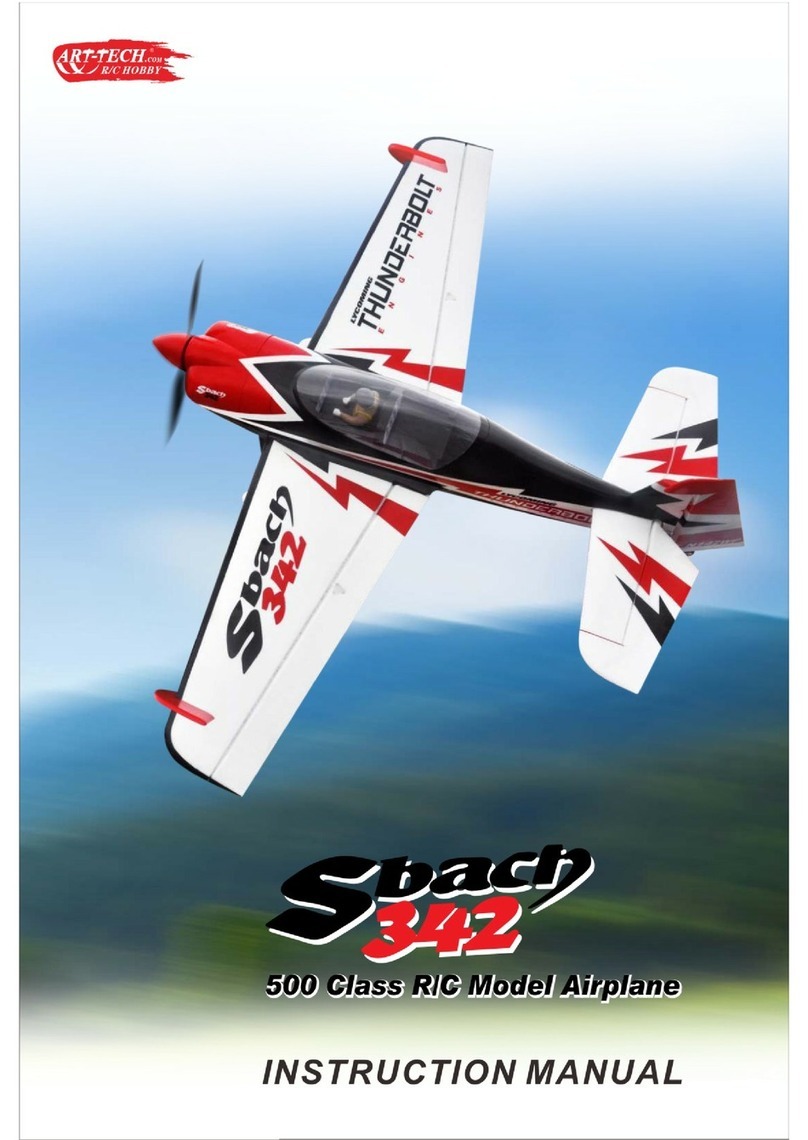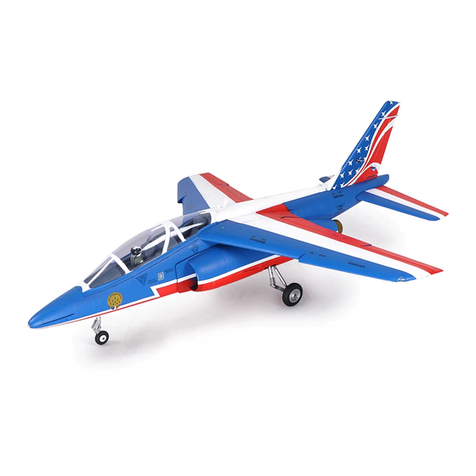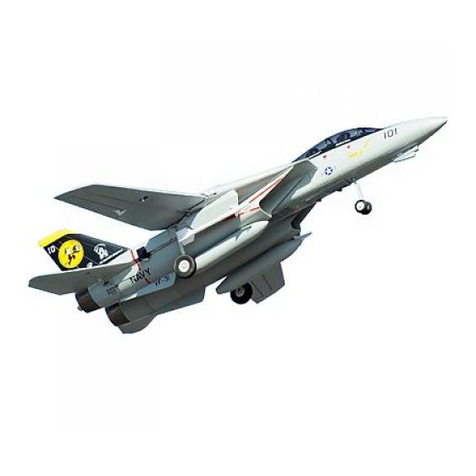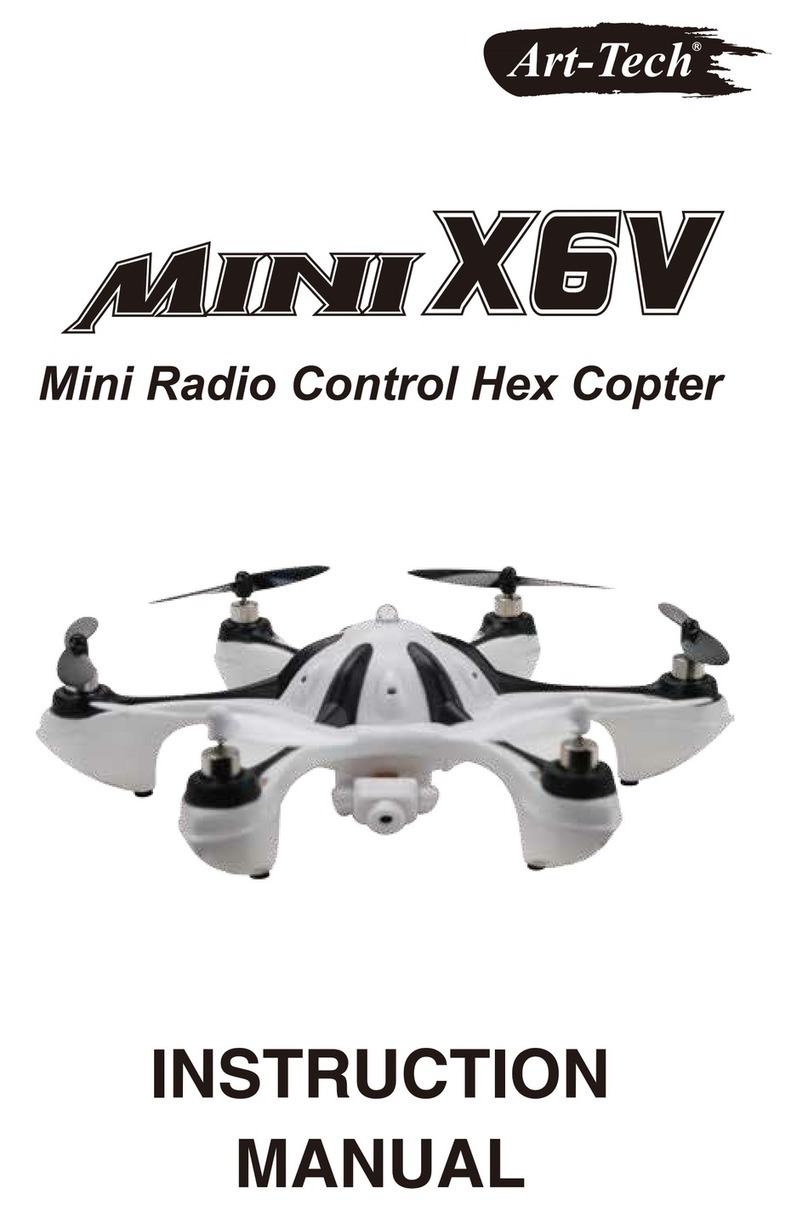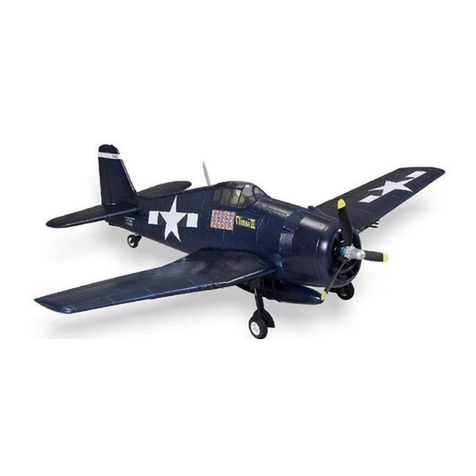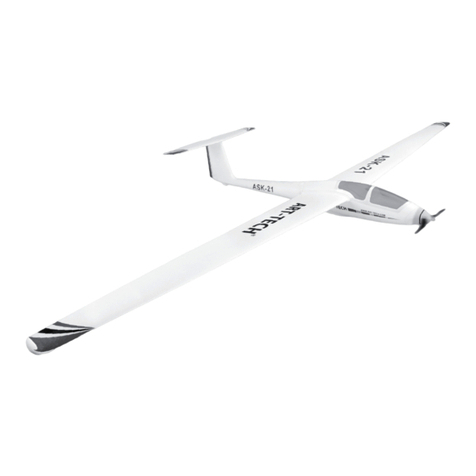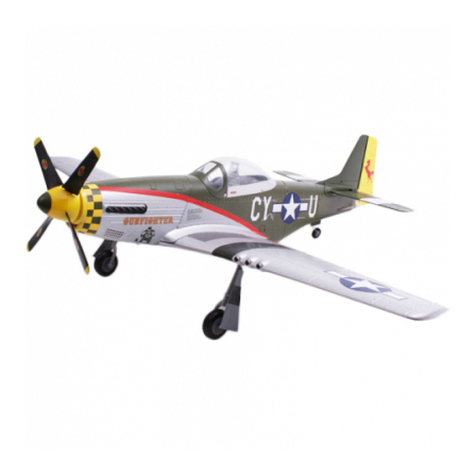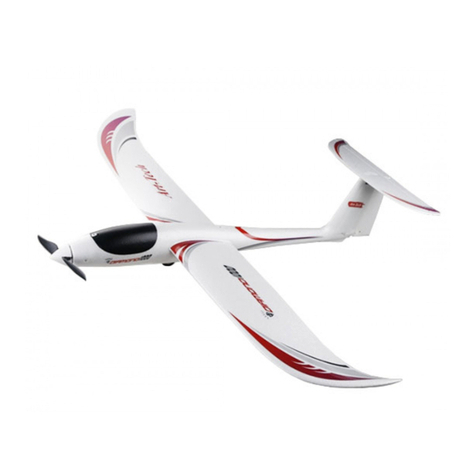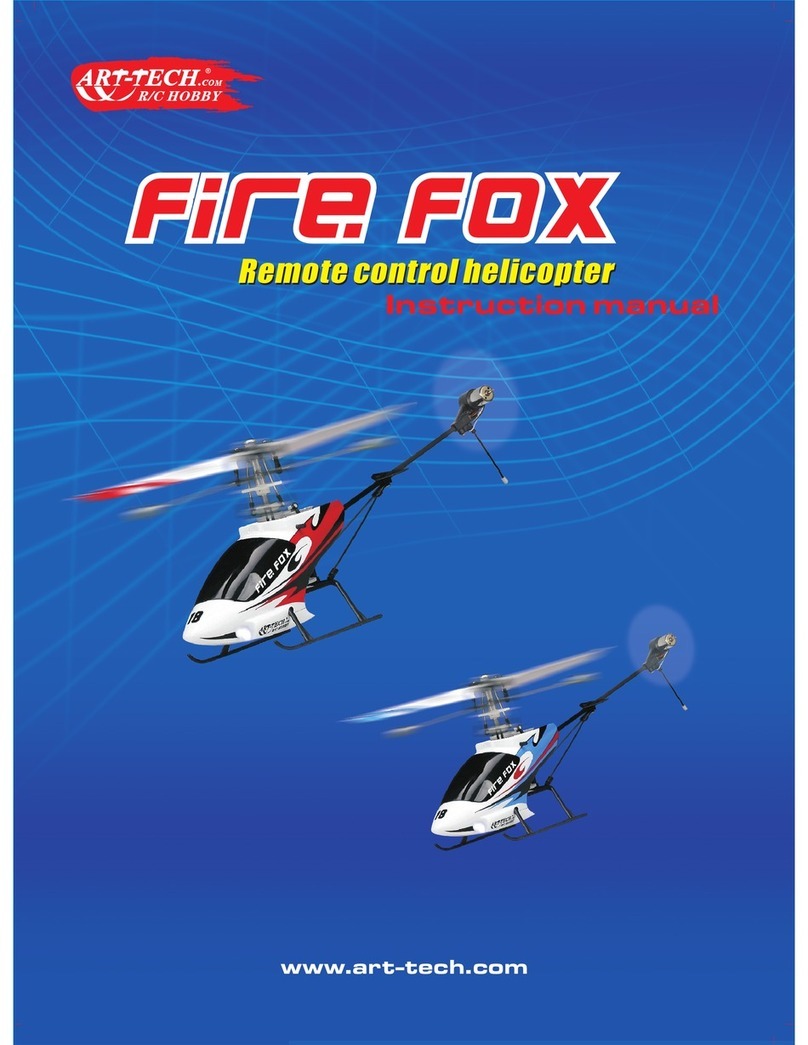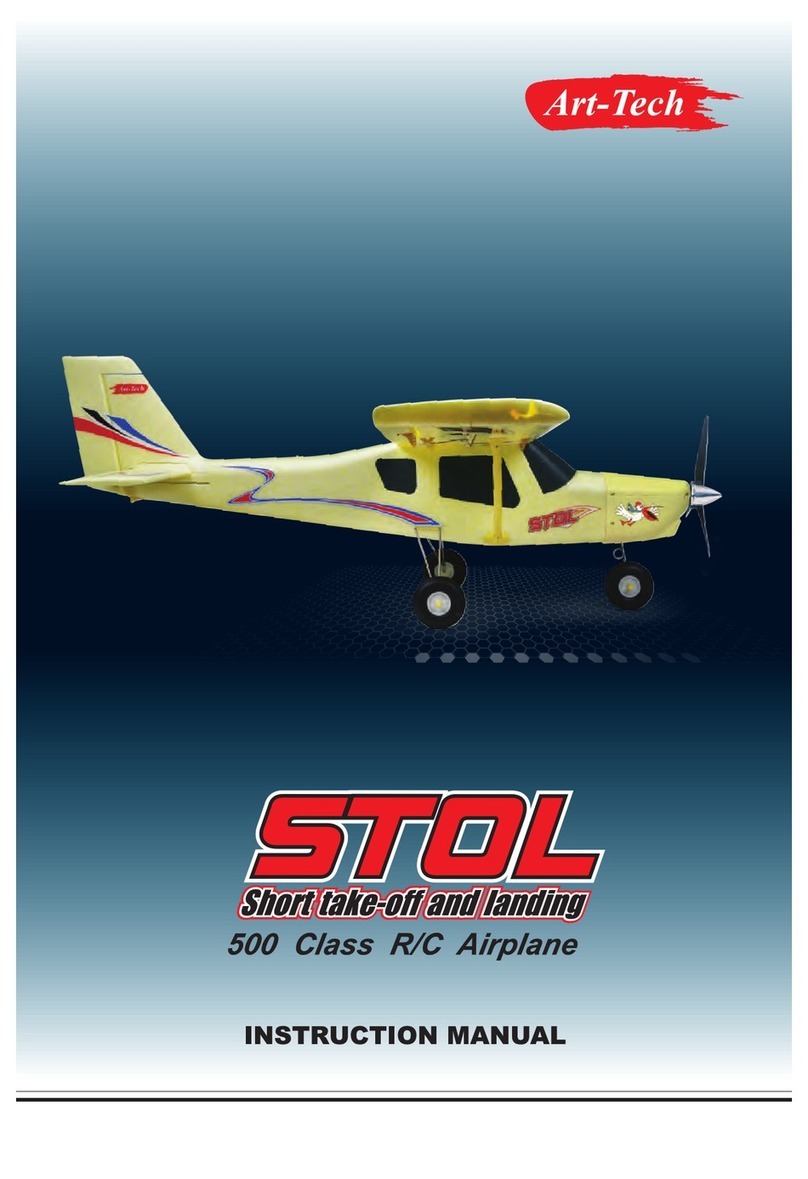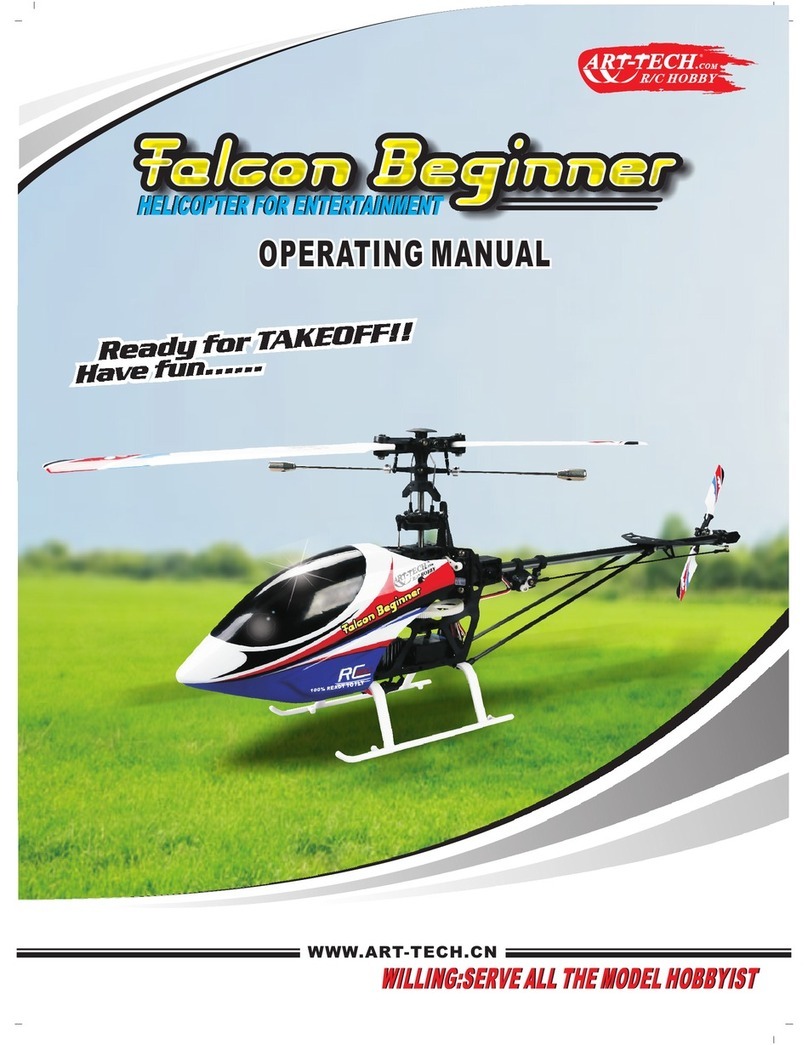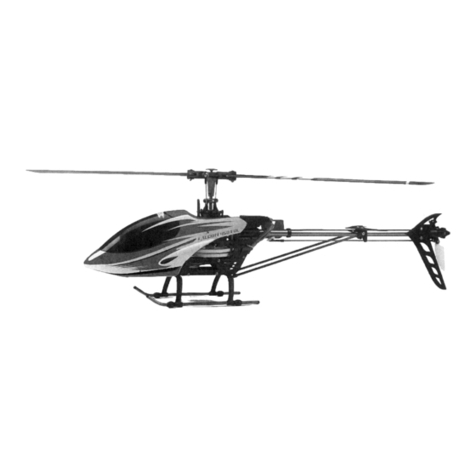
LEARNING HOW TO FLY
There are many true “beginner” airplanes out on the market today. They are usually electric power gliders,
slowflyers, or parkflyers. These beginner airplanes are such good models that most of them are not even bought by
first-time flyers but by long-time expert flyers! By following these simple instructions, you will learn to fly a RC
airplane in no time!
Understand how a plane flies. By understanding how a plane flies you will have greater control over your
plane. When the wing moves forward the air lifts it up. If it moves too slowly, it won't lift and it will fall right out of the
air. It therefore needs speed, which will come from either a motor and propeller, or by descending and gliding. All
the time that the wing is moving forward it is lifting, no matter what position it is in. It can be upside down, in a turn,
inverted, or doing acrobatics, and there is always a lift from the wing even though the lift might not be straight up as
it is when the plane is in flight. The airplane is able to make a turn by tilting in the direction of the turn, so that some
of the wing lift is angled either partly to the left or partly to the right depending on the direction of the turn. To turn
the plane, you tilt the wings with the ailerons or with the rudder, in the direction that you want the airplane to turn.
To make the airplane will go up, you give the up command to the elevator. The elevator surface angles up, and the
air that's hitting it blows the tail down and the nose up. As the airplane goes up it slows down. If it goes too slow
then the lift stops and the airplane falls-it will stall.
Turning a RC airplane is very different than turning a RC car or a RC boat. When you tilt the airplane's wing in the
direction that you want it to go, the airplane will continue to tilt as long as the wing is still angled in that direction..
To stop the airplane from turning, you move the control stick in the opposite direction from the turn so that the
wings will level out. If you let go of the control stick, the airplane should automatically come back to a level flight.
Make sure to check the following things before each flight.
★Choose a large flying field for your flight. Don't try to fly in your street or in another small enclosed
area, even if your airplane is capable of flying in such a restricted place. You will need a large open, airy place for
your first flights.
Hand launching your airplane. If you hand launch your airplane, make sure to throw it straight ahead
not up, and throw it hard.
Taking off from a ground roll. If you take off from a ground roll, the airplane needs to build up speed
before you signal up elevator, in order that you know that the airplane has enough speed to fly. When it actually
takes off and leaves the ground try to climb at a very small angle, not abruptly, because that may cause a loss of
airspeed and a stalled plane.
Don't climb too steeply. Give very little “up” elevator as you begin takeoff. Many beginners try to climb
too steeply which makes the plane slow down and crash.
Turns. Don't try any turns until the plane is very high up. Just climb straight ahead with very gentle turns.
Also make sure to practice gentle turns in the air before trying to land. Practice false landings while still high in
the air in order to get a good idea of the plane's falling speed. If the airplane stalls, just give it a bit of the down
elevator and the airplane will start flying again. When the airplane flies towards you, turn your body a little, so
that you can imagine right and left from the airplanes point of view. This will prevent you from getting confused
about which way to turn your airplane.
★Landing. Avoid turns when the airplane is low. Don't try to land your plane in a specific place. Instead just let
your plane glide slowly onto the ground ahead. The bigger the field when you fly for the first time, the greater are
your chances for success.
R/C STAFF WISHES YOU MUCH LUCK IN FLYING!
